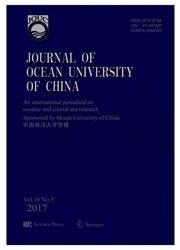

 中文摘要:
中文摘要:
Seagrass decline caused by the macroalgae blooms is becoming a common phenomenon throughout temperate and tropical regions. We summarized the incidence of macroalgae blooms throughout the world and their impact on seagrass beds by direct and indirect ways. The competition for living space and using resources is the most direct effect on seagrass beds when macroalgae are blooming in an aquatic ecosystem. The consequence of macroalgae blooms(e.g., light reduction, hypoxia, and decomposition) can produce significant indirect effects on seagrass beds. Light reduction by the macroalgae can decrease the growth and recruitment of seagrasses, and decomposition of macroalgae mats can increase the anoxic and eutrophic conditions, which can further constrict the seagrass growth. Meanwhile, the presence of seagrass shoots can provide substrate for the macroalgae blooms. Controlling nutrient sources from the land to coastal waters is a general efficient way for coastal management. Researching into the synergistical effect of climate change and anthropognic nutrient loads on the interaction between searsasses and macroalgae can provide valuable information to decrease the negative effects of macroalgae blooms on seagrasses in eutrophic areas.
 英文摘要:
英文摘要:
Seagrass decline caused by the macroalgae blooms is becoming a common phenomenon throughout temperate and tropical regions. We summarized the incidence of macroalgae blooms throughout the world and their impact on seagrass beds by direct and indirect ways. The competition for living space and using resources is the most direct effect on seagrass beds when macroalgae are blooming in an aquatic ecosystem. The consequence of macroalgae blooms(e.g., light reduction, hypoxia, and decomposition) can produce significant indirect effects on seagrass beds. Light reduction by the macroalgae can decrease the growth and recruitment of seagrasses, and decomposition of macroalgae mats can increase the anoxic and eutrophic conditions, which can further constrict the seagrass growth. Meanwhile, the presence of seagrass shoots can provide substrate for the macroalgae blooms. Controlling nutrient sources from the land to coastal waters is a general efficient way for coastal management. Researching into the synergistical effect of climate change and anthropognic nutrient loads on the interaction between searsasses and macroalgae can provide valuable information to decrease the negative effects of macroalgae blooms on seagrasses in eutrophic areas.
 同期刊论文项目
同期刊论文项目
 同项目期刊论文
同项目期刊论文
 期刊信息
期刊信息
